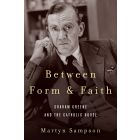Startling Figures
Encounters with American Catholic Fiction

This book can be opened with

Startling Figures is about Catholic fiction in a secular age and the rhetorical strategies Catholic writers employ to reach a skeptical, indifferent, or even hostile audience. Although characters in contemporary Catholic fiction frequently struggle with doubt and fear, these works retain a belief in the possibility for transcendent meaning and value beyond the limits of the purely secular. Individual chapters include close readings of some of the best works of contemporary American Catholic fiction, which shed light on the narrative techniques that Catholic writers use to point their characters, and their readers, beyond the horizon of secularity and toward an idea of transcendence while also making connections between the widely acknowledged twentieth-century masters of the form and their twenty-first-century counterparts.
This book is focused both on the aspects of craft that Catholic writers employ to shape the reader’s experience of the story and on the effect the story has on the reader. One recurring theme that is central to both is how often Catholic writers use narrative violence and other, similar disorienting techniques in order to unsettle the reader. These moments can leave both characters within the stories and the readers themselves shaken and unmoored, and this, O’Connell argues, is often a first step toward the recognition, and even possibly the acceptance, of grace. Individual chapters look at these themes in the works of Flannery O’Connor, J. F. Powers, Walker Percy, Tim Gautreaux, Alice McDermott, George Saunders, and Phil Klay and Kirstin Valdez Quade.
To borrow a metaphor from George Saunders, in this book, Michael O'Connell shines a light inside the 'black box' of Catholic fiction, illuminating the similar purposes behind the disorienting methods of these eclectic writers. Starting with the expected lead figures in Catholic fiction—Flannery O'Connor and Walker Percy—O'Connell moves out into less familiar territory to show how Tim Gautreaux, Alice McDermott, George Saunders, Phil Klay, and Kirstin Valdez Quade carry for the mantel in contemporary belles lettres. We need literary criticism of this sort where the meaning matters most, where readers can close the book and feel they have received grace.—Jessica Hooten Wilson, Seaver College Scholar of Liberal Arts, Pepperdine University, and author of Reading for the Love of God
Michael O’Connell's study provides a welcome expansion from the usual set of Catholic authors analyzed by critics. His linkage of the mid-twentietch century giants with more recent writers offers an important analysis of the ways Catholic authors continue to disorient their readers and push them toward a sense of transcendence.—L. Lamar Nisly, professor of English at Bluffton University, and author of Wingless Chickens, Bayou Catholics, and Pilgrim Wayfarers: Constructions of Audience and Tone in O’Connor, Gautreaux, and Percy
. . . [R]eadable, relatable and lively.—America Magazine
. . . [An] engaging and illuminating study. . .—American Catholic Studies
Introduction: “Surprise Me”: Going inside the “Black Box” of Catholic Fiction | 1
1 The “Blasting Annihilating Light” of Flannery O’Connor’s Art | 17
2 Disorientation and Reorientation in J. F. Powers’s Fiction | 34
3 Walker Percy and the End of the Modern World | 53
4 Tim Gautreaux and a Postconciliar Approach to Violence | 73
5 Belief and Ambiguity in the Fiction of Alice McDermott | 92
6 “Life Is Rough and Death Is Coming”: George Saunders and the Catholic Literary Tradition | 112
Epilogue: Phil Klay, Kirstin Valdez Quade, and the State of Contemporary Catholic Literature | 133
Acknowledgments | 147
Notes | 151
Works Cited | 165
Index | 173




